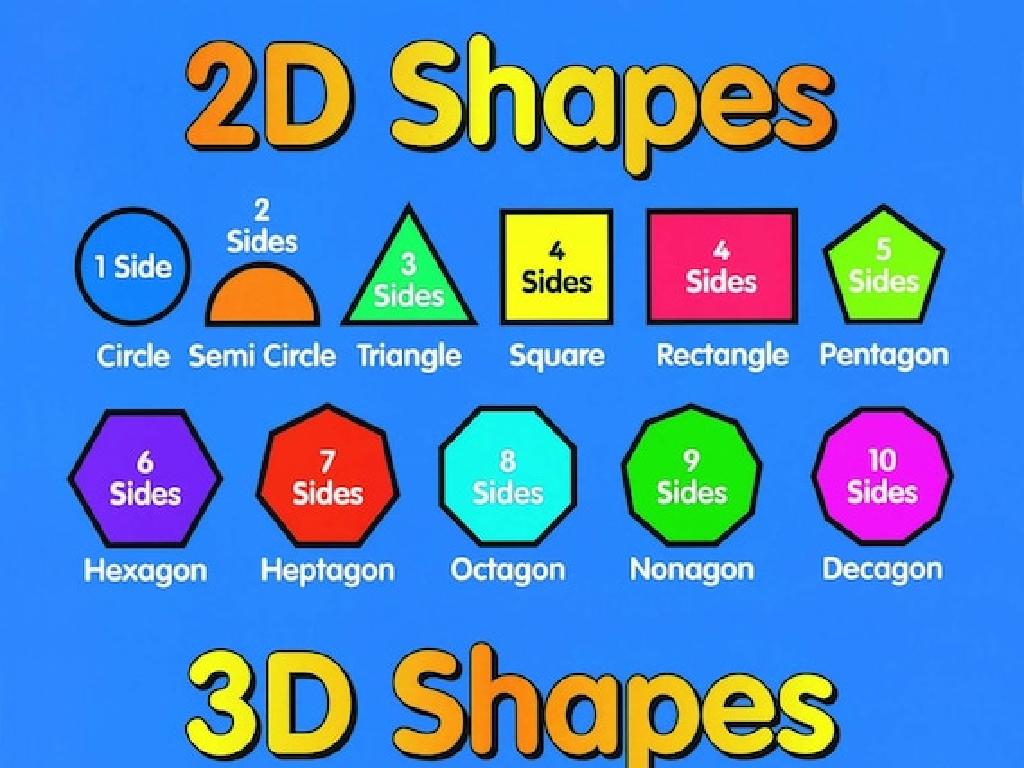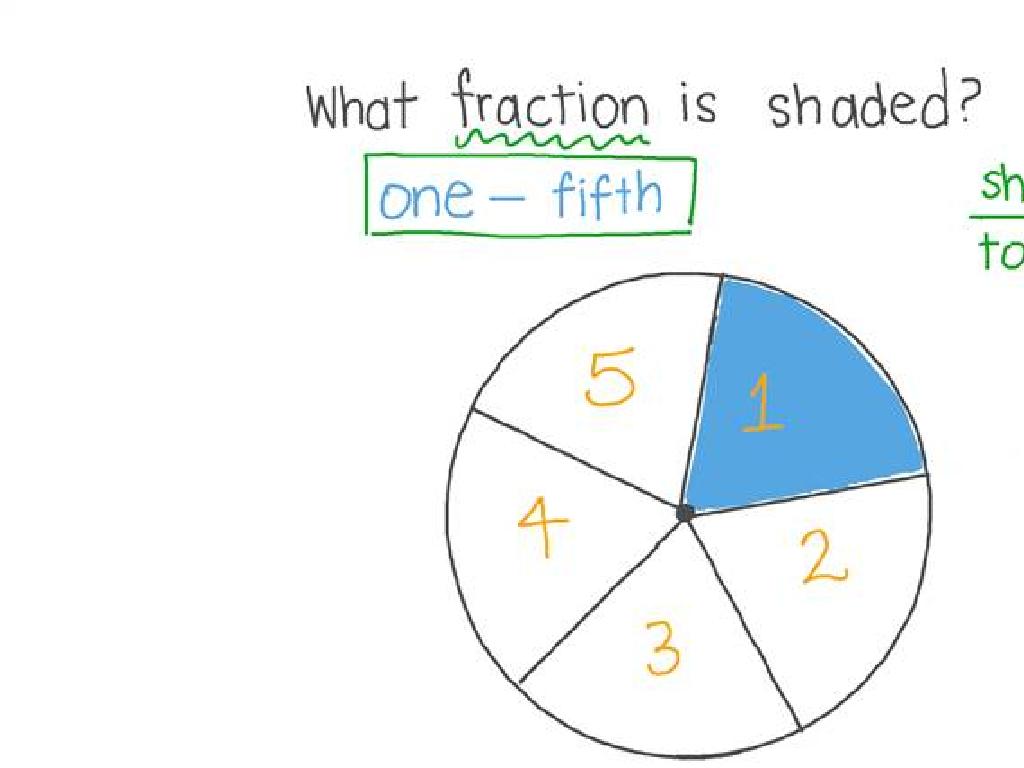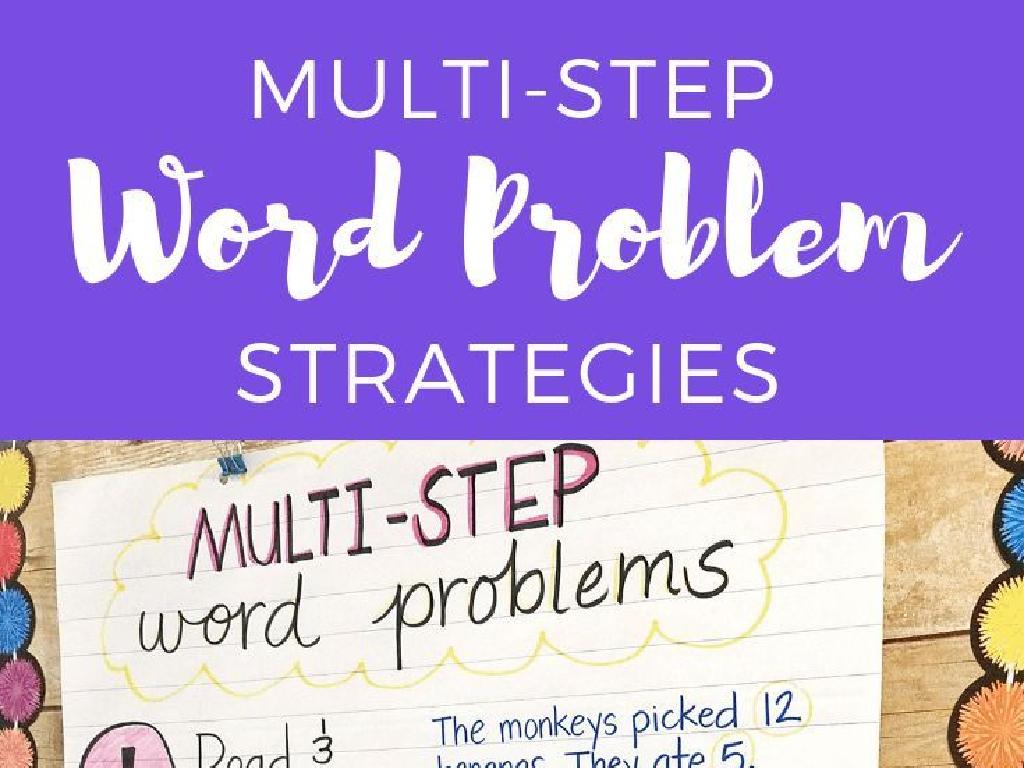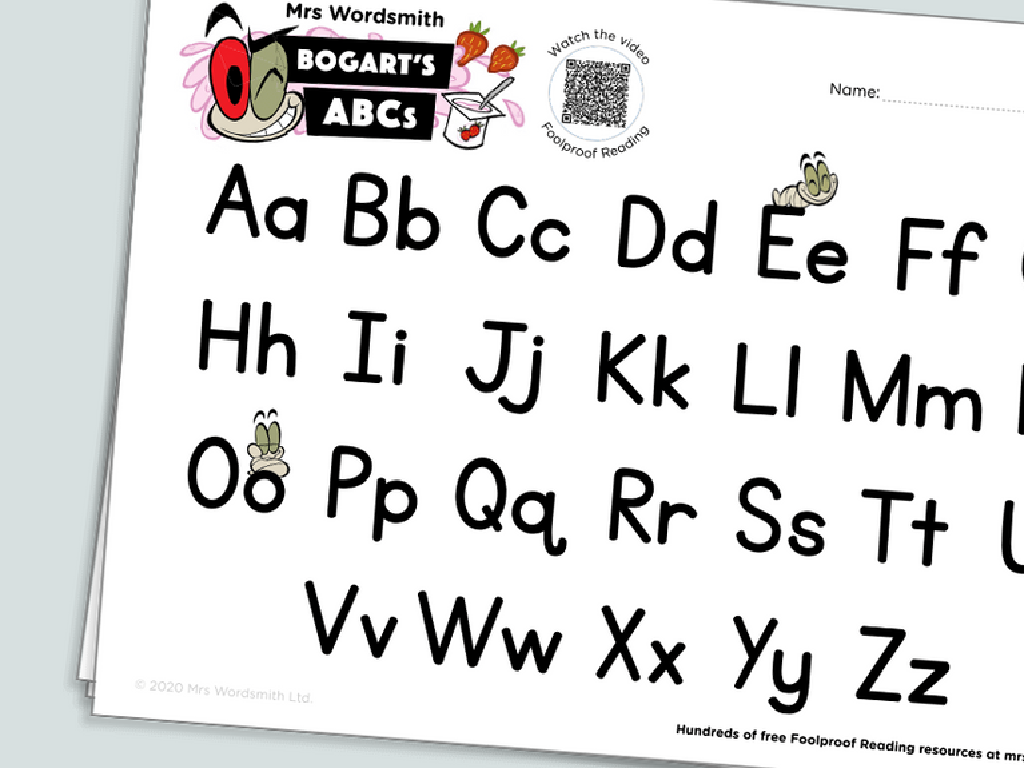Fewer And More - Compare By Matching
Subject: Math
Grade: Kindergarten
Topic: Comparing Up To 10
Please LOG IN to download the presentation. Access is available to registered users only.
View More Content
Comparing Quantities: Fewer and More
– Understanding ‘fewer’ and ‘more’
– ‘Fewer’ is when there are not as many items, and ‘more’ is when there are additional items.
– Comparing groups of items
– Look at two groups of things, like blocks or apples, to see which has more or fewer.
– Using matching to compare
– Match items one by one from each group to see which runs out first.
– Practice makes perfect
– We’ll do fun activities to learn this concept well!
|
This slide introduces the concept of comparing quantities to Kindergarten students. Start by explaining the terms ‘fewer’ and ‘more’ with simple, relatable examples. Use tangible items like toys or classroom objects to visually demonstrate the comparison. Engage the students in an activity where they match items from two groups to directly compare and understand which group has more or fewer items. Encourage participation and provide positive reinforcement as they grasp the concept. Prepare several hands-on activities with different sets of items to ensure all students can practice and become comfortable with comparing by matching.
Understanding ‘Fewer’: Comparing Quantities
– ‘Fewer’ means not as many
– Comparing cookies with a friend
– If you have 3 cookies and a friend has 5, you have fewer.
– Examples of ‘fewer’ items
– 5 ducks and 3 ducks: which group is fewer?
– Practice finding ‘fewer’
– We’ll match different sets to see which has fewer.
|
This slide introduces the concept of ‘fewer’ to Kindergarten students by relating it to everyday situations, like sharing cookies. Start by explaining that ‘fewer’ is used when comparing two sets of items and it means not having as many items as another set. Use tangible examples like cookies, toys, or ducks to illustrate the point. Encourage the children to think of their own examples of when they’ve had fewer items than someone else. Then, engage the students in a hands-on activity where they can practice matching sets of items to visually determine which set has fewer. This will help solidify their understanding of the concept through practical application.
Understanding ‘More’: Comparing Quantities
– ‘More’ means having a greater number
– When you count, ‘more’ is a bigger number.
– Comparing balloons with a friend
– If you have 5 balloons and your friend has 3, you have more.
– Visualizing ‘more’ with examples
– We’ll use pictures to see who has more toys, apples, or blocks.
|
This slide introduces the concept of ‘more’ to Kindergarten students by comparing quantities. Start by explaining that ‘more’ refers to a larger amount of something. Use relatable examples, such as balloons, to illustrate the point. Show pictures where one group clearly has a greater number of items than another and ask the students to identify which has more. This visual comparison will help them grasp the concept of ‘more’ in a concrete way. Encourage the students to think of their own examples and share them with the class. This interactive approach will reinforce their understanding of comparison by matching quantities.
Matching Game: Fewer or More?
– Understand ‘fewer’ and ‘more’
– Match objects on screen
– Use images of objects to match
– Decide which has fewer or more
– Compare two sets of objects
– Fewer = not as many, More = greater number
|
This interactive game is designed to help Kindergarten students grasp the concept of comparing quantities. The terms ‘fewer’ and ‘more’ are key vocabulary. During the activity, display images of different sets of objects on the screen. Guide the students to match objects and determine which set has fewer or more items. Reinforce the meaning of ‘fewer’ as having a smaller quantity and ‘more’ as having a larger quantity. Encourage students to articulate their thought process as they make comparisons. Possible activities include matching socks, counting crayons, or comparing the number of apples to oranges. This will help students apply these concepts in a fun and engaging way.
Comparing with Our Hands
– Show fewer and more with hands
– Compare 3 fingers to 5 fingers
– If I show 3 and you show 5, you have more!
– Who has more fingers?
– Practice with various numbers
– Let’s try 2 fingers and 4 fingers, then 6 fingers and 1 finger!
|
This slide is an interactive activity designed to teach Kindergarten students the concept of comparing quantities using their hands. It’s a simple and effective way to visualize ‘fewer’ and ‘more.’ Start by demonstrating with your own hands, showing 3 fingers on one hand and 5 on the other, asking the students to identify which is more. Encourage the students to participate by holding up their fingers to compare different numbers. This hands-on activity not only makes learning fun but also reinforces their understanding of comparison by matching quantities visually. As a teacher, you can walk around the classroom to ensure each student is engaged and understanding the concept. You can also introduce the terms ‘fewer’ and ‘more’ as you compare the numbers.
Class Activity: Comparing Blocks
– Make two piles of blocks
– Guess which has fewer or more
– Use your eyes and count to guess
– Match piles to check answers
– Count out loud together as a class
– Learn fewer and more concept
|
This activity is designed to help Kindergarten students understand the concepts of ‘fewer’ and ‘more’ through a hands-on experience. Provide each student with an assortment of blocks. Guide them to create two separate piles and then make an initial guess as to which pile has fewer blocks and which has more. After guessing, the students will count the blocks in each pile and match them one-to-one to visually confirm if their guesses were correct. This exercise will reinforce their counting skills and their ability to compare quantities. Possible variations of the activity could include using different colored blocks for each pile, comparing more than two piles, or introducing the concept of ‘the same’ if two piles have an equal number of blocks.
Review: Fewer and More
– ‘Fewer’ means not as many
– ‘More’ means a greater number
– Matching pictures to compare
– We’ll look at groups of items and decide which has fewer or more
– Practice with fun examples
– Example: 3 apples vs. 5 apples which is more?
|
This slide is a review of the concepts ‘fewer’ and ‘more’ for kindergarten students. Begin by asking the class what ‘fewer’ means, guiding them to understand it’s when there are not as many items compared to another set. Then, discuss ‘more’ and how it indicates a larger quantity. Use picture matching activities to reinforce these concepts, showing groups of items and asking students to identify which group has fewer or more items. Provide clear and simple examples, such as comparing small quantities of apples, to ensure understanding. Encourage participation and praise correct answers to build confidence.
Let’s Play a Game: Fewer or More?
– Roll the dice and move
– Observe two groups of items
– Look carefully at each group
– Decide which has fewer or more
– Use your counting skills
– Correct answers earn points
|
This interactive game is designed to help Kindergarten students understand the concepts of ‘fewer’ and ‘more’ through play. Set up a game board with spaces that have pictures or representations of two different groups of items, up to 10. As students roll the dice and move their pieces, they will land on these spaces and need to analyze the groups. They should use their counting skills to determine which group has fewer or more items. If they answer correctly, they receive a point. This activity not only reinforces counting skills but also introduces comparative analysis in a fun and engaging way. Prepare variations of the game with different items or numbers to cater to different skill levels within the class.
Conclusion and Goodbye!
– Celebrate learning about fewer and more
– You’re now comparing experts
– Time for a big round of applause
– Clap your hands for each other!
– Proud of your hard work today!
|
This slide marks the end of the lesson on comparing quantities using the concepts of ‘fewer’ and ‘more.’ It’s a moment to celebrate the students’ understanding and their ability to compare groups of items up to 10. Encourage the children to recognize their progress and feel proud of their learning. Lead them in giving themselves and their classmates a big round of applause, reinforcing the positive atmosphere and their achievements. This positive reinforcement helps build their confidence and excitement about learning math. Remember to smile, make the applause fun, and end the lesson on a high note!






